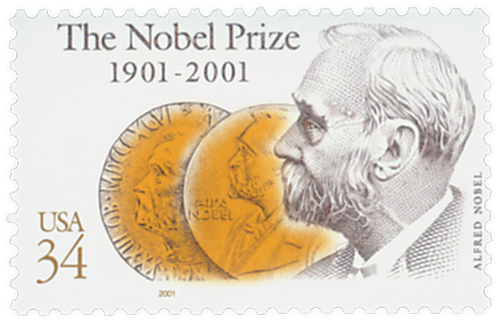
# 3504 - 2001 34c The Nobel Prize
34¢ The Nobel Prize Centennial
City: Washington, DC
Quantity: 35,000,000
Printed by: De La Rue Security Printing
Printing Method: Lithographed and engraved
Perforations: 11
Color: Multicolored
Birth Of Alfred Nobel
One of eight children, Nobel was the descendant of Swedish scientists Olaus Rudbeck. He had an interest in engineering and explosives from an early age, with his father teaching him some of the basic science.
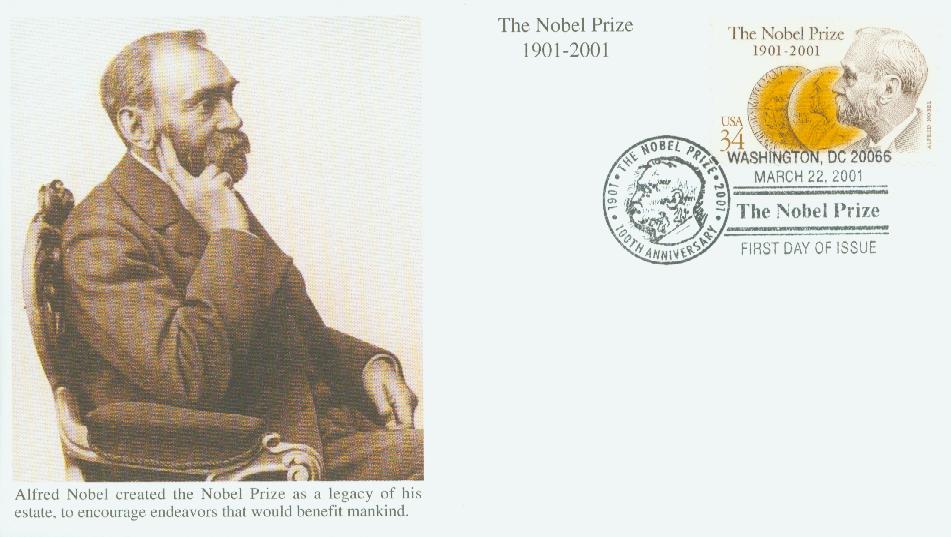
In 1837, Nobel’s father moved to Saint Petersburg where he became a successful manufacturer of tools and explosives. This allowed Nobel and his family to move there as well and receive a good education. Nobel did well in chemistry and learned English, French, German, and Russian.

After attending school for 18 months, Nobel studied with a chemist in Paris who invented nitroglycerin. While Ascanio Sobrero, the man who invented it opposed its use because it was unpredictable, Nobel believed he could find a way to control it and make commercial explosives.
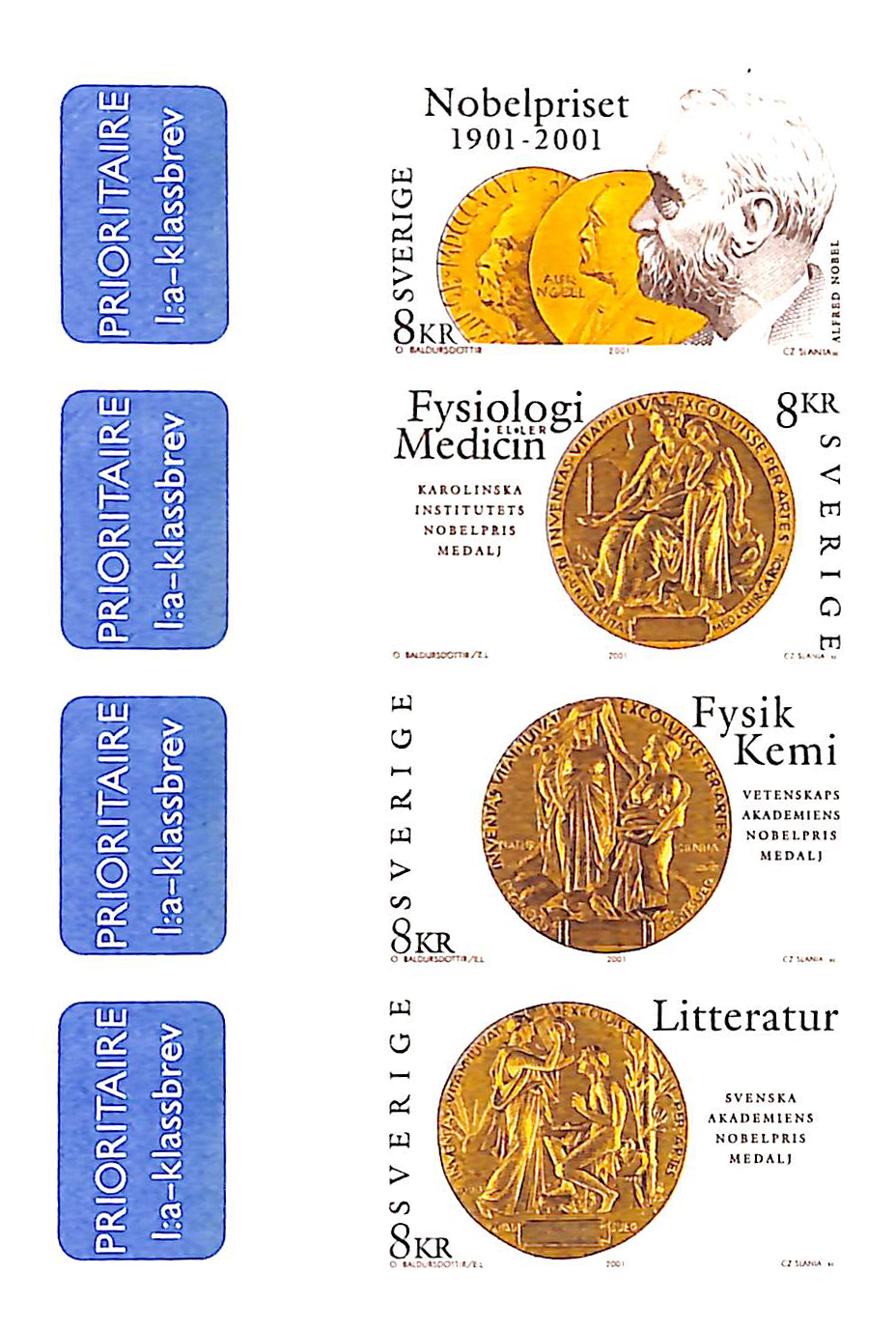
Nobel then went to the US for a year to work with Swedish-American inventor John Ericsson. While in the US, he filed for his first patent, for a gas meter. He received his first Swedish patent in 1863, for “ways to prepare gunpowder.” Nobel then devoted the majority of his time to the study of explosives and the safe use of nitroglycerin. He then invented a detonator and blasting cap. And in 1867, he invented dynamite, which was easier and safer to handle than nitroglycerin.
Over the course of his life, Nobel received 355 patents and built over 90 armament factories, though he was personally a pacifist. He invested in his brothers’ oilfields and built a substantial fortune during his lifetime.
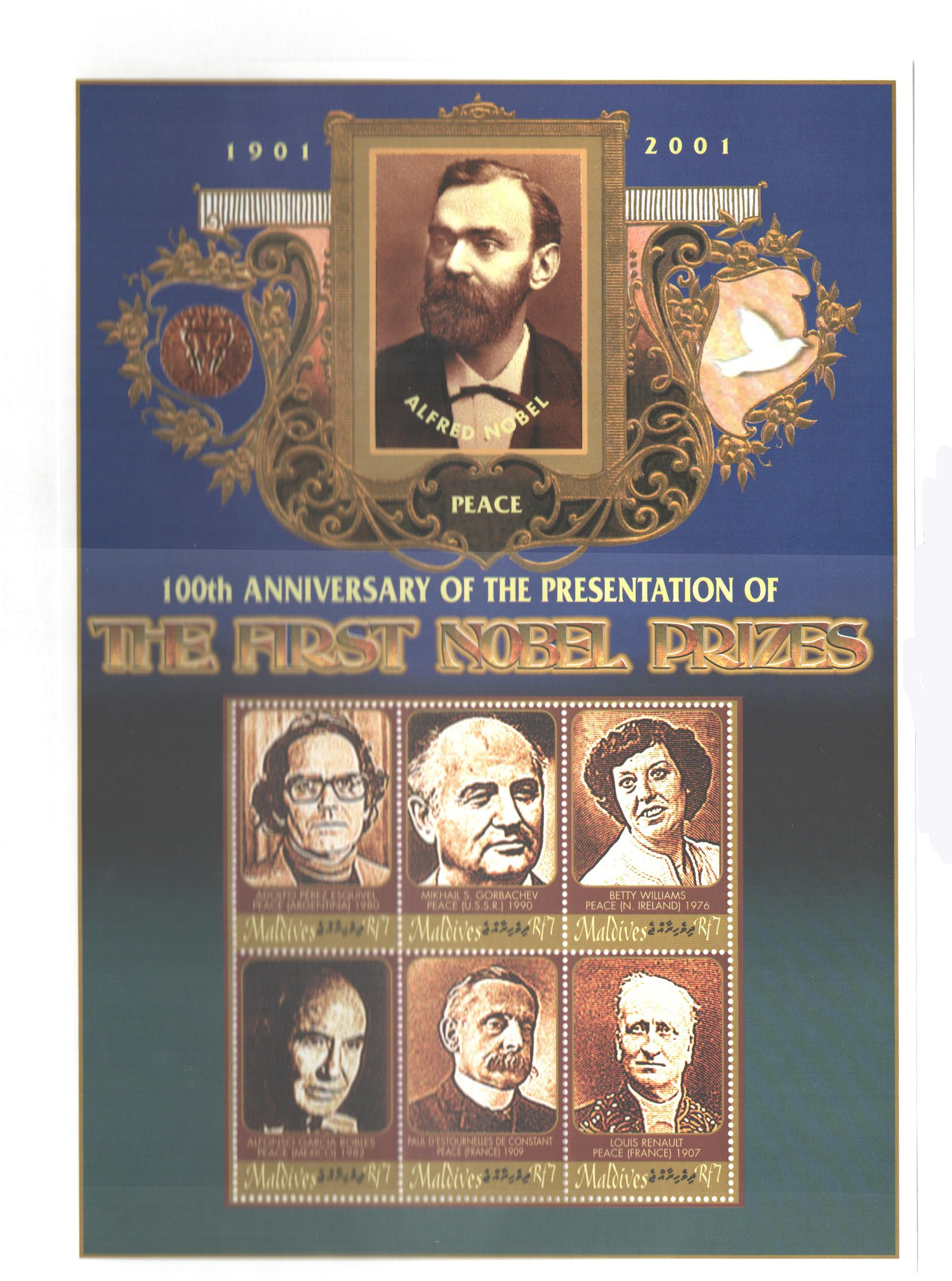
In 1888, one of his brothers died and a newspaper erroneously ran an obituary about Alfred instead, titled, “The merchant of death is dead.” Nobel was horrified to think that he would be remembered that way and sought to improve his legacy. This inspired him to establish the Nobel Prize. He placed his fortune into a trust that would establish the awards after his death. He died from a heart issue and a stroke on December 10, 1896.
According to Nobel’s will, the awards would be given, with no regard to nationality, “…to those who, during the preceding year, shall have conferred the greatest benefit on mankind” in the fields of physics, chemistry, physiology or medicine, literature, and peace. The Bank of Sweden funded an additional award for economics in 1968.
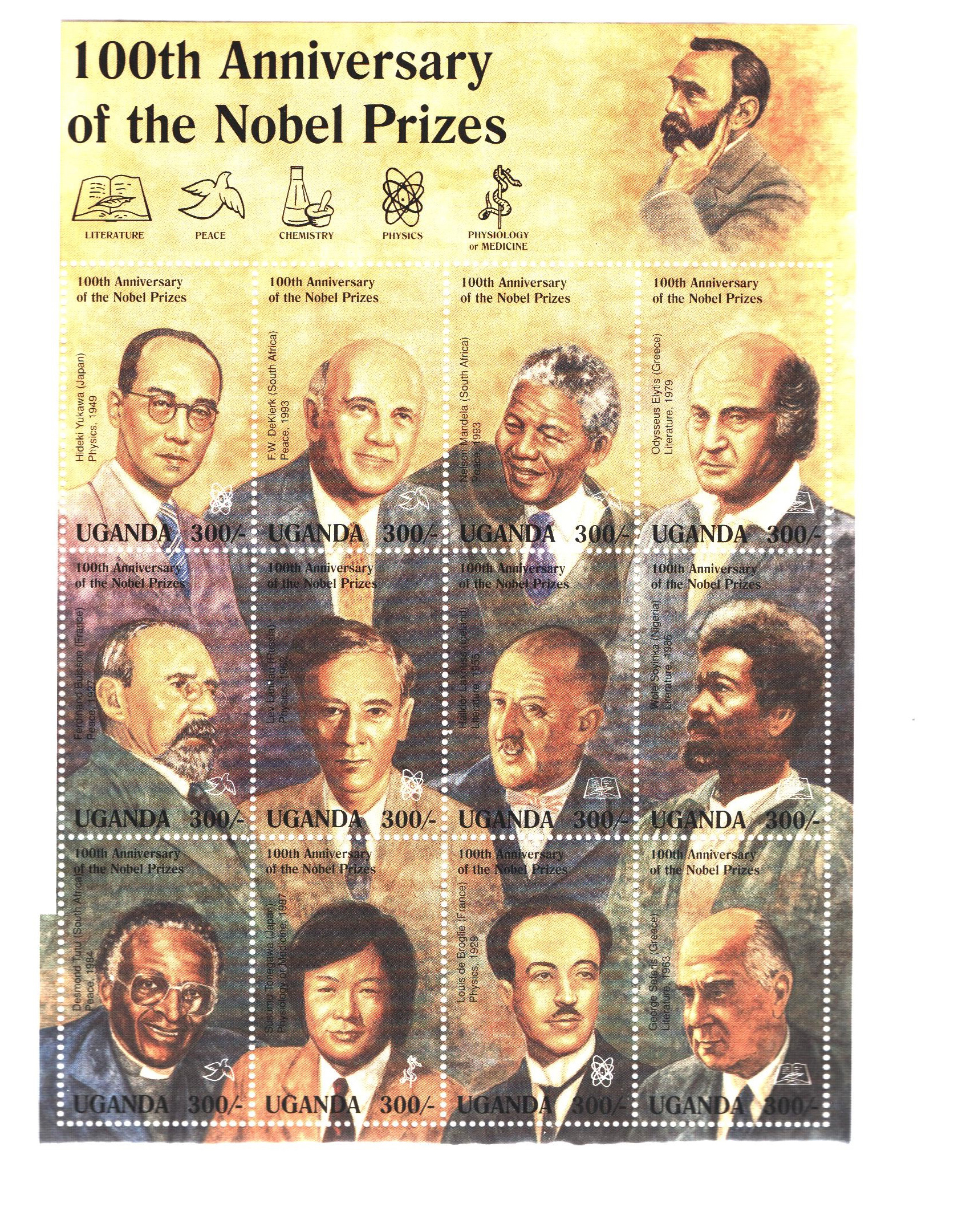
The first Nobel Prizes were awarded December 10, 1901, the fifth anniversary of Nobel’s death. The first Nobel Peace Prize was awarded to Jean-Henry Dunant, the founder of the Red Cross. Although living in a Swiss poorhouse at the time of his award, Dunant continued his nature of generosity by giving the prize money to charity.
To date, there have been 584 prizes awarded to 923 laureates. The Prize consists of a gold medal, a citation, and a significant sum of money – about $1.3 million. Up to three people may be awarded each prize. In that case, the prize money is divided between them. The Nobel Prize remains the world’s most highly regarded award.
Click here for more from the Nobel Prize website.
34¢ The Nobel Prize Centennial
City: Washington, DC
Quantity: 35,000,000
Printed by: De La Rue Security Printing
Printing Method: Lithographed and engraved
Perforations: 11
Color: Multicolored
Birth Of Alfred Nobel
One of eight children, Nobel was the descendant of Swedish scientists Olaus Rudbeck. He had an interest in engineering and explosives from an early age, with his father teaching him some of the basic science.

In 1837, Nobel’s father moved to Saint Petersburg where he became a successful manufacturer of tools and explosives. This allowed Nobel and his family to move there as well and receive a good education. Nobel did well in chemistry and learned English, French, German, and Russian.

After attending school for 18 months, Nobel studied with a chemist in Paris who invented nitroglycerin. While Ascanio Sobrero, the man who invented it opposed its use because it was unpredictable, Nobel believed he could find a way to control it and make commercial explosives.

Nobel then went to the US for a year to work with Swedish-American inventor John Ericsson. While in the US, he filed for his first patent, for a gas meter. He received his first Swedish patent in 1863, for “ways to prepare gunpowder.” Nobel then devoted the majority of his time to the study of explosives and the safe use of nitroglycerin. He then invented a detonator and blasting cap. And in 1867, he invented dynamite, which was easier and safer to handle than nitroglycerin.
Over the course of his life, Nobel received 355 patents and built over 90 armament factories, though he was personally a pacifist. He invested in his brothers’ oilfields and built a substantial fortune during his lifetime.

In 1888, one of his brothers died and a newspaper erroneously ran an obituary about Alfred instead, titled, “The merchant of death is dead.” Nobel was horrified to think that he would be remembered that way and sought to improve his legacy. This inspired him to establish the Nobel Prize. He placed his fortune into a trust that would establish the awards after his death. He died from a heart issue and a stroke on December 10, 1896.
According to Nobel’s will, the awards would be given, with no regard to nationality, “…to those who, during the preceding year, shall have conferred the greatest benefit on mankind” in the fields of physics, chemistry, physiology or medicine, literature, and peace. The Bank of Sweden funded an additional award for economics in 1968.

The first Nobel Prizes were awarded December 10, 1901, the fifth anniversary of Nobel’s death. The first Nobel Peace Prize was awarded to Jean-Henry Dunant, the founder of the Red Cross. Although living in a Swiss poorhouse at the time of his award, Dunant continued his nature of generosity by giving the prize money to charity.
To date, there have been 584 prizes awarded to 923 laureates. The Prize consists of a gold medal, a citation, and a significant sum of money – about $1.3 million. Up to three people may be awarded each prize. In that case, the prize money is divided between them. The Nobel Prize remains the world’s most highly regarded award.
Click here for more from the Nobel Prize website.










